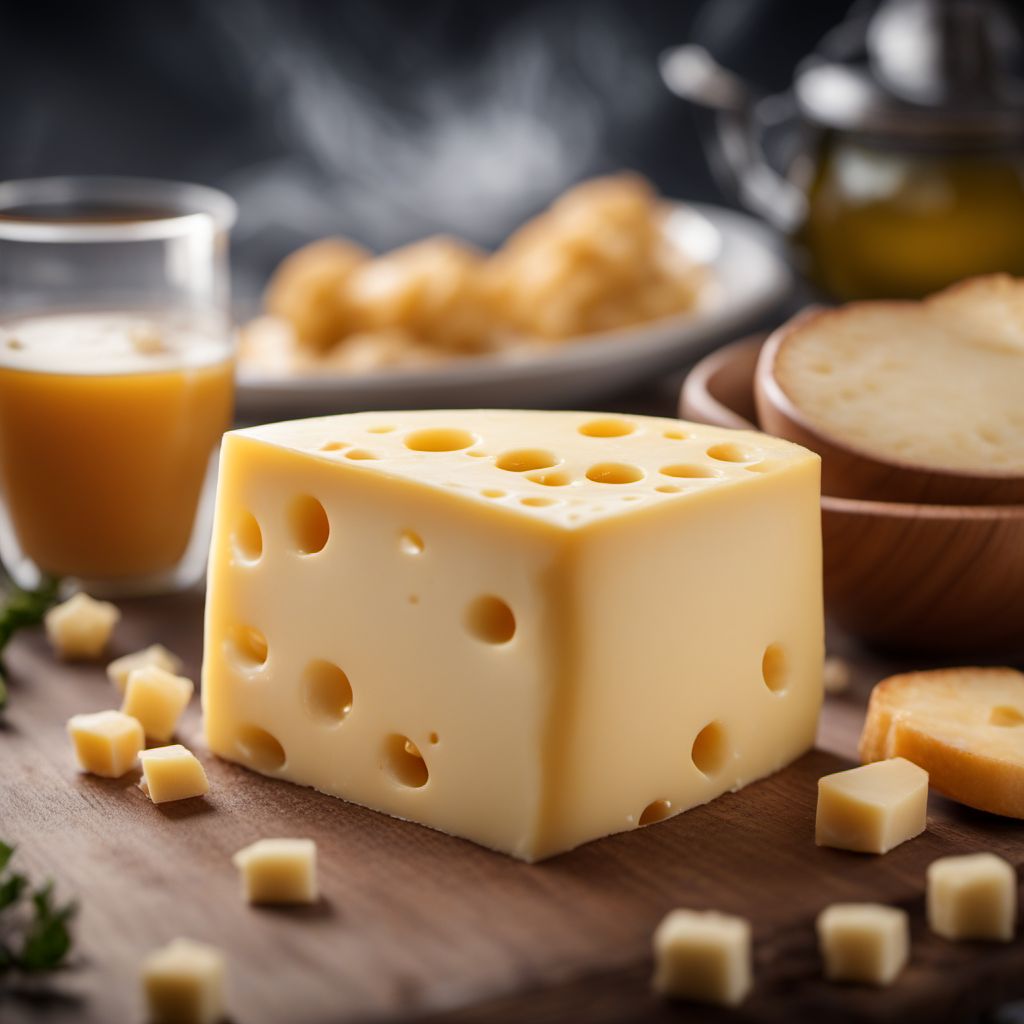
Ingredient
Imitation cheese
"Melting the Myths: Unveiling the World of Plant-Based Cheese Alternatives"
Imitation cheese is a non-dairy product that mimics the taste, texture, and appearance of traditional cheese. Made from plant-based ingredients such as nuts, soy, or vegetable oils, it is often fortified with vitamins and minerals to enhance its nutritional value. Imitation cheese can be found in various forms, including slices, shreds, blocks, and spreads. It offers a wide range of flavors and can be used in a variety of dishes, from sandwiches and pizzas to dips and sauces. While it may not replicate the exact characteristics of dairy cheese, imitation cheese provides a delicious and cruelty-free alternative for those with dietary restrictions or ethical considerations.
Origins and history
The concept of imitation cheese dates back to ancient times when people began experimenting with plant-based alternatives to dairy products. However, it was not until the 20th century that significant advancements were made in creating more realistic and palatable imitation cheeses. Today, imitation cheese has gained popularity due to the increasing demand for vegan and lactose-free options, as well as the growing awareness of the environmental impact of animal agriculture.
Nutritional information
Imitation cheese is typically lower in calories and saturated fat compared to traditional dairy cheese. It is often fortified with calcium, vitamin B12, and other nutrients to provide a similar nutritional profile to dairy cheese.
Allergens
Imitation cheese may contain allergens such as nuts or soy, so individuals with allergies should carefully read the ingredient labels before consuming.
How to select
When selecting imitation cheese, look for brands that use high-quality plant-based ingredients and avoid those with excessive additives or preservatives. Opt for products that have a clean ingredient list and are free from artificial flavors or colors.
Storage recommendations
Imitation cheese should be stored according to the instructions on the packaging. Generally, it is best to keep it refrigerated in an airtight container to maintain its freshness and prevent it from drying out.
How to produce
While it is challenging to produce imitation cheese at home, there are recipes available online for those who wish to experiment with making their own plant-based cheese alternatives using ingredients such as cashews, nutritional yeast, and spices.
Preparation tips
Imitation cheese can be used in various ways, such as melting it on sandwiches or pizzas, grating it for salads or pasta dishes, or spreading it on crackers or bread. When melting imitation cheese, it is recommended to do so slowly over low heat to achieve a smooth and creamy texture. Additionally, combining it with other ingredients like plant-based milk or nutritional yeast can enhance its flavor and texture.
Culinary uses
Imitation cheese is commonly used as a substitute for dairy cheese in vegan or lactose-free recipes. It can be used in sandwiches, wraps, burgers, pasta dishes, casseroles, and even desserts like cheesecakes or cream fillings.
Availability
Imitation cheese is widely available in grocery stores, health food stores, and online retailers, making it accessible to individuals worldwide.
More ingredients from this category
Recipes using Imitation cheese

Vegan New York-Style Pizza
The Big Apple's Vegan Delight

Gurian Khachapuri
Savory Cheese-filled Georgian Bread

Guangxi-style Electric Tomini
Spicy and Tangy Electric Tomini: A Fusion of Italian and Guangxi Flavors

Vegetarian Pierogi
Savory Stuffed Dumplings: Vegetarian Pierogi Delight

Gwaramari - Georgian Cheese Bread
Savory Delight: Georgian Cheese Bread with a Twist


